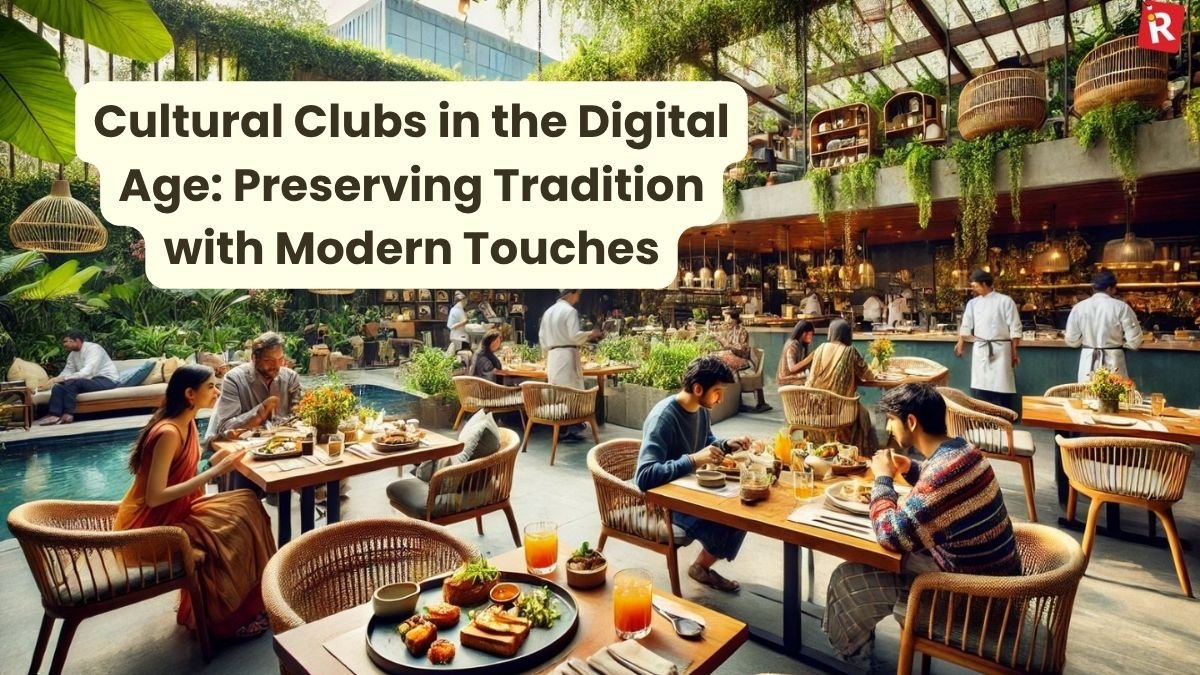Today, when everything is under the grip of internet, smartphones and social media, the question arises – will our old cultural heritage and traditions survive? Will the folk art, dance, music, theatre and linguistic traditions that have been going on for generations be swept away in the storm of the digital age? But fortunately, the answer is – no. Because this digital age has given a new direction, new life and new identity to cultural clubs.
This article focuses on how cultural clubs are keeping our traditions alive with the help of modern technology and digital platforms, and connecting the youth to their roots.
What are cultural clubs?
Cultural clubs are groups or organizations that work to preserve, promote and pass on the cultural heritage of the society to the coming generations. These include dance, music, folk art, classical arts, drama, poetry, linguistic diversity, food and other cultural elements.
In old times, these clubs were limited to schools, colleges or social institutions, but now they have become active on digital platforms as well.
Impact of the digital age: Threat or opportunity?
When the internet and smartphones reached everyone’s hands, initially it seemed that people would move away from folk arts and traditions. Western music, pop culture and global trends attracted the youth. But with time it was understood that the digital world can also give new life to tradition.
Today there are many YouTube channels, Instagram pages, Facebook groups and websites on digital media that are taking arts like Bhangra, Kathak, Bharatnatyam, Qawwali, folk songs, Kabir’s couplets, Bhojpuri songs or Tamil Natyam to the global level.
How did cultural clubs get digitalized?
- Use of social media platforms: Cultural clubs made full use of platforms like Facebook, Instagram, Twitter and YouTube.
Kept their members connected through live events, virtual workshops and online exhibitions. - Creation of websites and blogs: Many clubs created their own websites, which include information about their events, profiles of members and cultural articles.
- Virtual meetings and practice sessions: Through the use of apps and software such as Zoom, Google Meet, and Microsoft Teams, the clubs were accommodated to proceed with weekly practices and meetings.
- Digital documentation and archiving: Old dances, plays, speeches, music and paintings are being digitized and stored so that future generations can also benefit from them.
Youth participation: A positive sign
Due to the digital age, the youth is now also getting attracted to these clubs. Through online medium, they have got an opportunity to learn, teach and present art according to their interest.
Example:
- College students started staging digital plays together.
- Some clubs organized online song competitions, kavi sammelans and reel challenges.
- Online painting and handicraft workshops are being conducted for children and teenagers.
Celebration of cultural diversity
Cultural clubs on digital platforms have also embraced regional and linguistic diversity. While earlier a club was limited to a single community or region, now these platforms are connecting different states, languages and cultures.
A club in which artistes speaking Hindi, Punjabi, Marathi, Tamil, Malayalam, Bengali and Urdu are working together.
National festivals as well as regional festivals – like Onam, Lohri, Bihu, Navreh – are also being celebrated.
Global identity and promotion of Indian culture
With the digital medium, Indian cultural clubs are now making their mark on international platforms as well. Clubs run by NRIs are keeping the Indian tradition alive in the US, Canada, Australia and Europe.
- Indian students settled in Canada organised a virtual Garba competition.
- Tamil organisation based in the US started an online Bharatanatyam training course.
Challenges that became inspiration
Although the digital age has given new wings to the clubs, it also brought many challenges:
- Technological inequality: Not every village or small town has access to fast internet or digital equipment.
This prevents many talents from reaching the stage. - Digital fatigue: Constantly working on screens makes artists tired and there is no connection like in traditional practice.
- Lack of intimacy: The feeling of standing together on stage and presenting art sometimes diminishes in online sessions.
- Still, despite these obstacles, the clubs did not give up. Many adopted a hybrid model – sometimes online, sometimes offline – and kept their activities alive.
The way forward: A beautiful confluence of technology and tradition
In the digital age, cultural clubs are now not only preserving tradition, but also molding it in a new form. Their role is going to be even more important in the future.
Potential developments:
- Dance and music analysis using artificial intelligence
- Immersive learning of folk traditions through virtual reality
- Collaboration among international cultural clubs
Conclusion:
The digital age has not only provided technical support to cultural clubs but has also taught them the art of combining tradition with modernity. Today, when the world is changing rapidly, these clubs have proved how strong our cultural roots are and how we can safely pass them on to future generations with the help of technology.
